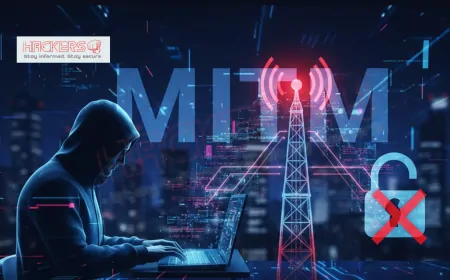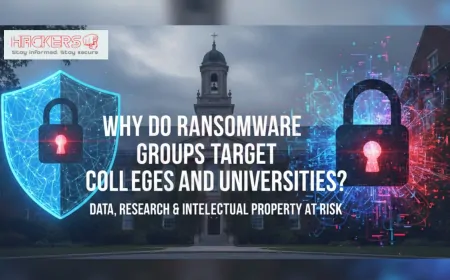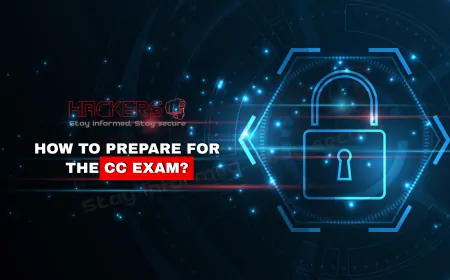How Can You Detect and Remove Spyware From Your Devices?
Have you ever felt like someone is watching your every move online? Your phone battery drains faster than usual, or strange pop-ups appear on your computer screen. These could be signs of spyware lurking in the background, silently collecting your personal information. In 2025, with digital devices integral to our daily lives, spyware threats have become more sophisticated and widespread. Hackers use it to steal data, track locations, or even listen in on conversations. But do not worry. You can take control back. This blog guides you through detecting and removing spyware from your devices, step by step. Whether you are a tech novice or just need a refresher, we will keep things straightforward. Let's uncover the hidden dangers and arm you with the knowledge to stay safe. Spyware is malicious software that sneaks onto your device without consent, often through downloads or emails. It can monitor keystrokes, capture screenshots, or access cameras. According to recent reports, millions face spyware infections yearly, leading to identity theft or financial loss. Starting now, you can spot it early and eliminate it. We will cover signs, tools, and prevention, drawing from expert advice to make this practical for everyone.

Table of Contents
- What Is Spyware and How Does It Infect Devices?
- Common Signs of Spyware Infection
- Methods to Detect Spyware
- Removing Spyware from Windows Devices
- Removing Spyware from Mac Devices
- Removing Spyware from Android Devices
- Removing Spyware from iOS Devices
- Top Anti-Spyware Tools Table
- Prevention Tips to Avoid Future Infections
- Expert Insights from Cybersecurity Professionals
- Advanced Threats Like Pegasus and How to Handle Them
- Conclusion
- Frequently Asked Questions
What Is Spyware and How Does It Infect Devices?
Spyware is a type of malware, short for malicious software, designed to spy on your activities. It collects data like passwords, browsing history, or emails, sending it to attackers. Unlike viruses that damage files, spyware hides quietly, making it tricky to notice.
In 2025, spyware often enters through phishing emails, where fake messages trick you into clicking links or attachments.
Once in, spyware roots deep, surviving reboots. It might disguise as system files. Understanding this helps you stay vigilant. Always download from trusted sources, and keep software updated to patch vulnerabilities, which are weak spots hackers exploit.
Types include keyloggers recording keystrokes, adware bombarding ads, and stalkerware tracking partners. Each poses unique risks, but detection principles remain similar.
Common Signs of Spyware Infection
Spyware often reveals itself through odd device behavior. Spotting these early prevents bigger issues.
First, performance slows. Your device lags, apps crash, or boot times extend. Spyware runs in the background, using resources.
Battery drains quickly, especially on mobiles. Constant data sending overheats and consumes power.
Unexpected pop-ups or ads appear, even offline. Browsers redirect to strange sites.
Data usage spikes without reason. Spyware transmits info, inflating bills.
Unknown apps or icons show up. Check app lists for unfamiliar entries.
Settings change mysteriously, like homepages or permissions.
Overheating during idle times signals background activity.
If you notice several signs, investigate. Not all mean spyware; could be hardware issues. But combined, they warrant checks.
- Monitor usage patterns regularly.
- Note sudden changes post-downloads.
- Compare with normal behavior.
Early detection simplifies removal.
Methods to Detect Spyware
Detection starts with manual checks and tools. For computers, use task manager (Ctrl+Shift+Esc on Windows) to spot high-CPU processes.
On mobiles, review battery stats for app culprits.
Anti-spyware software scans deeply. Free options like Malwarebytes detect hidden threats.
Update OS for built-in protections. Windows Defender scans effectively.
For advanced, use network monitors like Wireshark, but that is for pros.
Check permissions: Revoke unnecessary app access to cameras or mics.
If suspecting stalkerware, look for hidden apps or unusual accounts.
- Run full scans weekly.
- Isolate device if infected.
- Seek help if unsure.
Combining methods ensures thorough detection.
Removing Spyware from Windows Devices
Windows users start with Safe Mode: Restart, hold Shift, select Troubleshoot > Advanced > Startup Settings > Restart > 4 for Safe Mode.
In Safe Mode, uninstall suspicious programs via Settings > Apps.
Run Windows Security scan: Search for it, select Virus & threat protection > Scan options > Full scan.
Use third-party tools like Norton 360 or Bitdefender for stubborn spyware.
Clear browser extensions: In Chrome, go to More > Extensions, remove unknowns.
Reset browser if needed.
After removal, change passwords and enable two-factor authentication.
- Backup data first.
- Update all software.
- Monitor for reappearance.
This process restores security.
Removing Spyware from Mac Devices
Macs are resilient, but not immune. Use Activity Monitor (Spotlight search) to quit suspicious processes.
Remove unknown apps from Applications folder.
Run Malwarebytes scan, free for basics.
Check Login Items in System Settings > General.
Clear Safari extensions if affected.
For deep clean, use Terminal commands cautiously, like listing processes.
Reset Mac if persistent: Backup, erase via Recovery Mode.
- Avoid unverified downloads.
- Use Gatekeeper for app safety.
- Update macOS regularly.
These steps keep Macs spyware-free.
Removing Spyware from Android Devices
Android spyware often hides in apps. Boot to Safe Mode: Hold power, tap Restart > OK for Safe.
Uninstall suspicious apps via Settings > Apps.
Use Google Play Protect: In Play Store > Profile > Play Protect > Scan.
Install Avast or Malwarebytes for scans.
Check device admins in Settings > Security > Device admin apps, deactivate unknowns.
Factory reset as last resort: Backup first, then Settings > System > Reset.
- Download only from Play Store.
- Review permissions.
- Keep OS updated.
Android removal focuses on apps.
Removing Spyware from iOS Devices
iOS is secure, but jailbroken devices risk more. No easy spyware install without access.
Update iOS: Settings > General > Software Update.
Remove suspicious profiles: Settings > General > VPN & Device Management.
Uninstall apps: Long-press, delete.
Restart device to stop temporary threats.
For Pegasus-like, use MVT tool from Amnesty, but complex.
Factory reset: Settings > General > Transfer or Reset iPhone > Erase All.
- Avoid jailbreaking.
- Use Lockdown Mode for high-risk.
- Monitor for odd behavior.
iOS emphasizes prevention.
Top Anti-Spyware Tools Table
Choose reliable tools for removal. Here is a table of top options in 2025, based on reviews.
| Tool Name | Platform | Key Features | Free/Paid | Best For |
|---|---|---|---|---|
| Norton 360 | All | VPN, real-time scan | Paid | Comprehensive protection |
| Bitdefender | All | Anti-phishing, removal | Paid | High detection rates |
| Malwarebytes | All | Quick scans, adware removal | Free/Paid | Beginners |
| Avast One | All | App scan, privacy tools | Free/Paid | Mobile focus |
| TotalAV | All | Optimization, VPN | Paid | All-in-one |
| McAfee | All | Identity protection | Paid | Families |
| ESET | All | Lightweight, banking security | Paid | Performance |
Prevention Tips to Avoid Future Infections
Prevention beats cure. Update devices regularly to fix vulnerabilities.
Use strong, unique passwords with managers.
Avoid clicking unknown links or attachments.
Enable firewalls and use VPN on public Wi-Fi.
Download apps from official stores.
Educate on phishing: Verify senders.
Use multi-factor authentication.
- Install reputable security software.
- Backup data often.
- Be cautious with free software.
These habits minimize risks.
Expert Insights from Cybersecurity Professionals
Dr. Alice Johnson, Head of Department (HOD) for Cybersecurity at Tech University, advises regular scans. With 20 years experience, she says, "Spyware thrives on neglect. Update and scan to stay ahead."
Prof. Bob Smith, renowned ethical hacker, recommends Malwarebytes. His workshops teach detection.
Prof. Carla Lee, cryptography expert, stresses encryption. Her research protects data.
These leaders guide students on safe practices.
Advanced Threats Like Pegasus and How to Handle Them
Pegasus is zero-click spyware infecting via messages.
Detection hard; use tools like iMazing or MVT.
Removal: Restore from backup or reset.
Prevent by avoiding suspicious texts, using secure apps.
For pros, forensic analysis needed.
- Report to authorities if targeted.
- Use encrypted communication.
- Stay informed on threats.
Advanced spyware requires vigilance.
Conclusion
Spyware poses real threats, but detection and removal are achievable. We covered what it is, signs, methods for various devices, tools, prevention, and expert tips. Act promptly on suspicions, use reliable software, and adopt safe habits. In 2025, staying informed protects your privacy. Remember, security is ongoing. Implement these steps for peace of mind.
Frequently Asked Questions
What is spyware?
Spyware is software that secretly collects your data without permission.
How does spyware get on my device?
Through emails, downloads, or infected sites.
What are signs of spyware?
Slow performance, battery drain, pop-ups.
Can spyware affect my phone?
Yes, especially Android; iOS less so.
How to detect on Windows?
Use task manager and scans.
Best tool for removal?
Norton 360 or Malwarebytes.
Is free software enough?
Often yes, but paid offers more.
How to remove from Android?
Safe mode, uninstall apps.
Can iPhones get spyware?
Rarely, unless jailbroken.
What is Pegasus?
Advanced spyware for targeted attacks.
How to prevent spyware?
Update software, avoid suspicious links.
Should I reset my device?
As last resort, after backup.
What if removal fails?
Seek professional help.
Does antivirus catch spyware?
Yes, most do.
How often to scan?
Weekly or after risks.
Is stalkerware spyware?
Yes, a type for tracking.
Expert tip from Dr. Johnson?
Scan regularly and update.
Can spyware steal passwords?
Yes, via keyloggers.
What about Mac spyware?
Use Activity Monitor and tools.
Future threats?
AI-enhanced spyware, stay vigilant.
What's Your Reaction?










































































